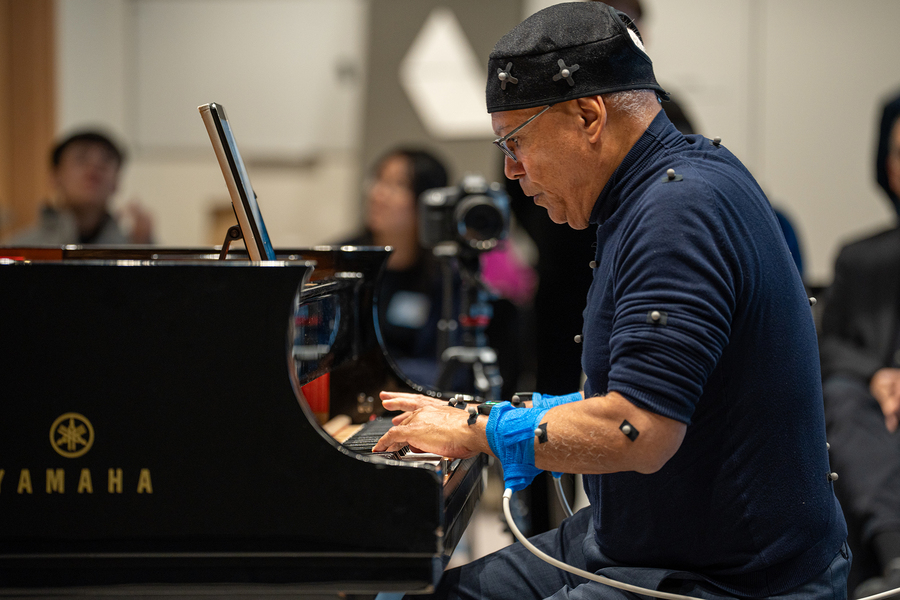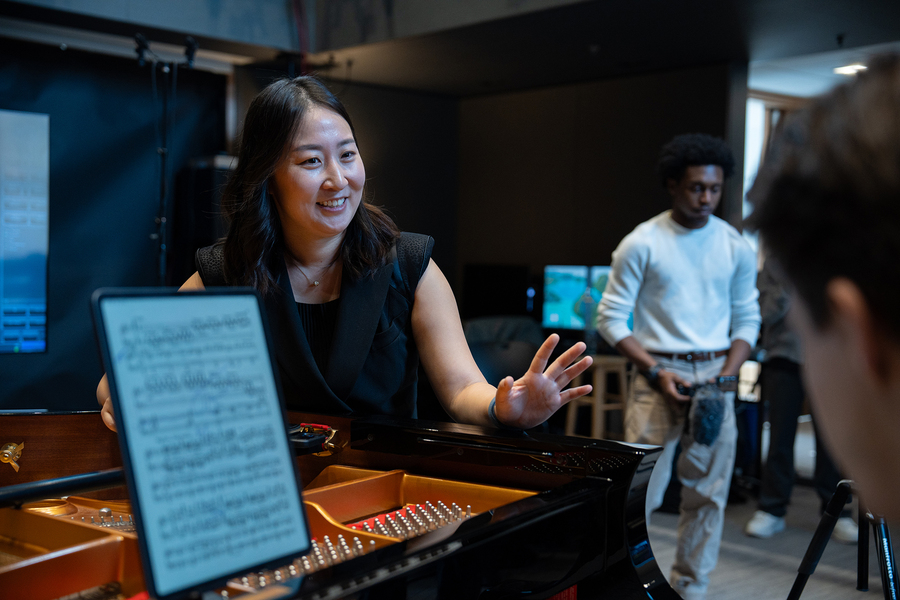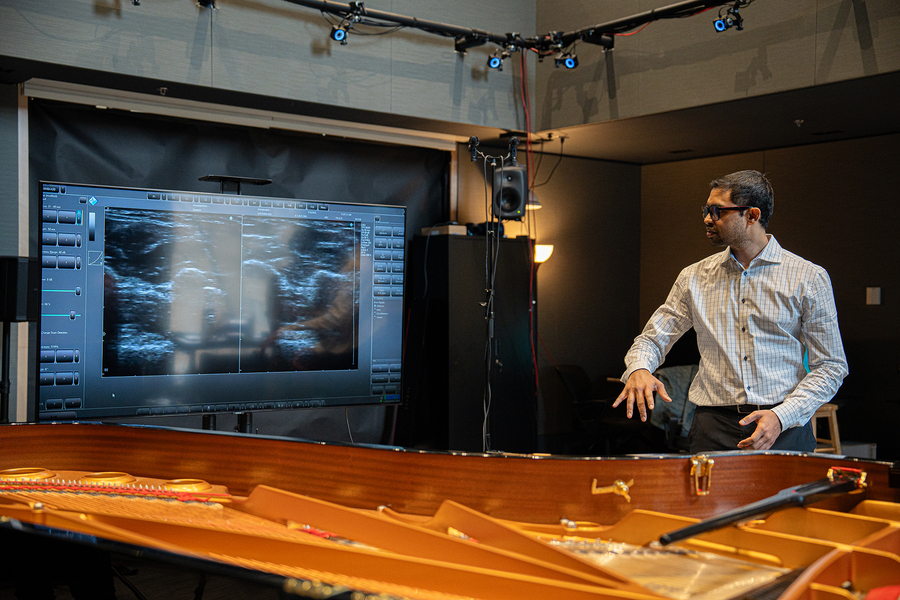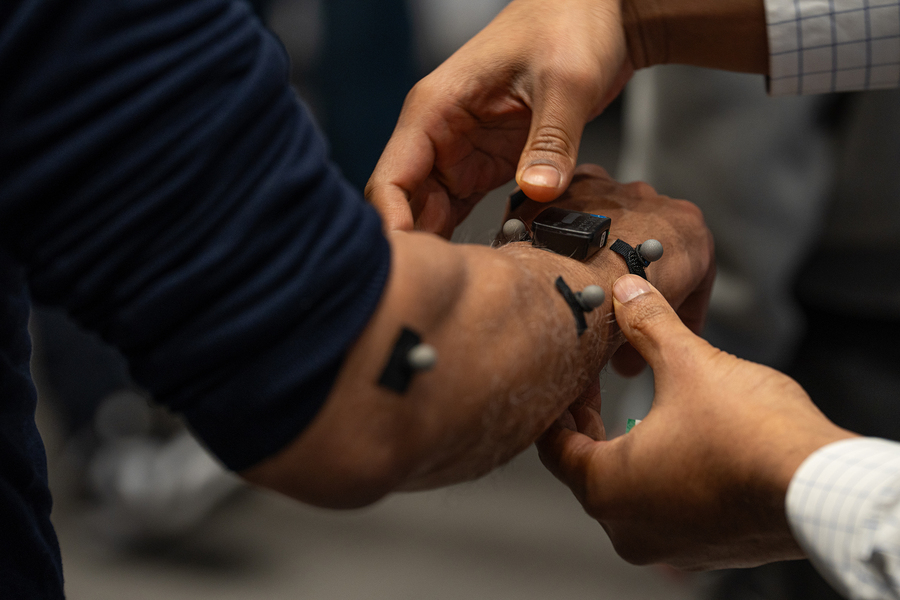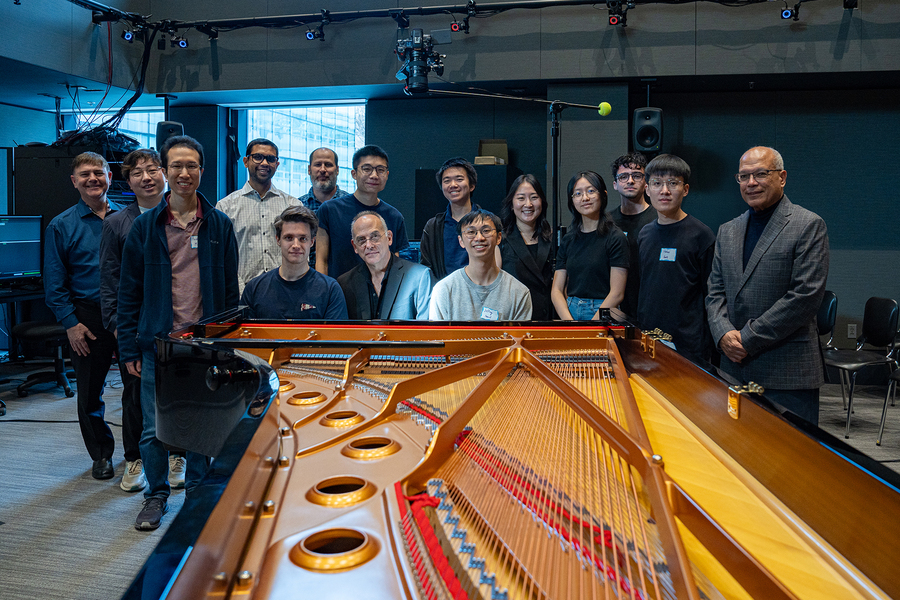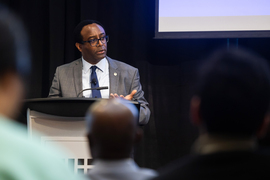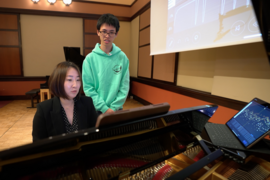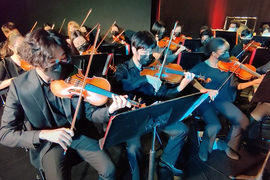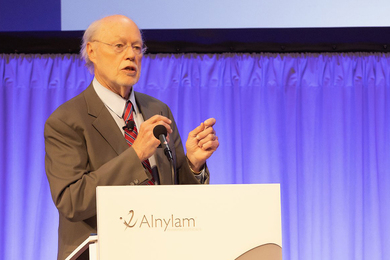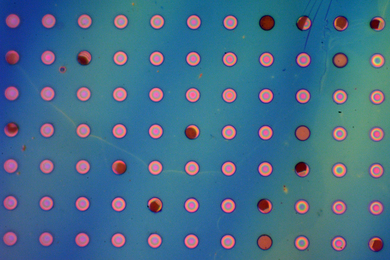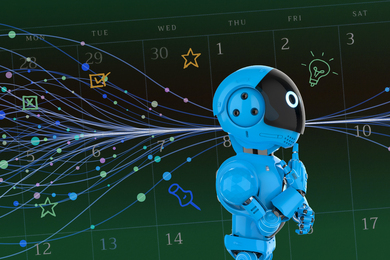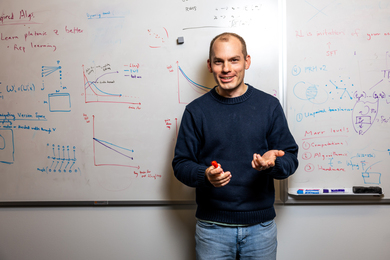Watching and listening to a pianist’s performance is an immersive and enjoyable experience. The pianist and the instrument, with a blend of skill, training, and presence, create a series of memorable moments for themselves and the audience. But is there a way to improve the performance and our understanding of how the performer and their instrument work together to create this magic, while also minimizing performance-related injuries?
Mi-Eun Kim, director of keyboard studies in MIT’s Music and Theater Arts Section, and Praneeth Namburi PhD ’16, a research scientist in MIT’s Institute for Medical Engineering and Science, are investigating how the body works when pianists play. Their joint project, The Biomechanics of Assimilating a New Piano Skill, aims to develop mechanistic insights that could transform how we understand and teach piano technique, reduce performance-related injuries, and bridge the gap between artistic expression and biomechanical efficiency.
Their project is among those recently selected for a SHASS+ Connectivity Fund grant through the MIT Human Insight Collaborative.
“The project emerged from a convergence of interests and personal experiences,” Namburi says. “Mi-Eun witnessed widespread injuries among fellow pianists and saw how these injuries could derail careers.”
Kim is a renowned pianist who has performed on stages throughout the United States, in Europe, and in Asia. She earned the Liszt-Garrison Competition’s Liszt Award and the Corpus Christi solo prize, among other honors. She teaches piano and chamber music through MIT Music’s Emerson/Harris Program and chamber music through MIT’s Chamber Music Society. She earned advanced degrees from the University of Michigan and holds a bachelor of arts degree in history from Columbia University.
Namburi’s work focuses on the biomechanics of efficient, expressive, and coordinated movement. He draws inspiration from artists and athletes in specialized movement disciplines, such as dancing and fencing, to investigate skilled movement. He earned a PhD in experimental neuroscience from MIT and a bachelor of engineering degree in electrical and electronic engineering from Singapore’s Nanyang Technological University.
Pursuing the project
Kim and Namburi arrived at their project by taking different roads into the arts. While Kim was completing her studies at the University of Michigan, Namburi was taking dance lessons as a hobby in Boston. He learned that both expressive and sustainable movements might share a common denominator. “A key insight was that elastic tissues play a crucial role in coordinated, expressive, and sustainable movements in dance — a principle that could extend beyond dancing,” he notes.
“We recognized that studying elastic tissues could shed light on reducing injury risk, as well as understanding musical expression and embodiment in the context of piano playing,” Kim says.
Kim and Namburi began collaborating on what would become their project in October 2023, though the groundwork was in place months before. “A visiting student working with me on a research project studying pianists in the MIT.nano Immersion Lab reached out to Mi-Eun in summer 2023,” Namburi recalls. A shared Instagram video showing their setup with motion capture sensors and a pianist playing Chopin on a digital keyboard sparked Kim’s interest. The Immersion Lab is an open-access, shared facility for MIT and beyond dedicated to visualizing, understanding, and interacting with large, multidimensional data.
“I couldn't make sense of all the sensors, but immediately noticed they were using a digital keyboard,” she says.
Kim wanted to elevate these studies’ quality by pairing the musicians with the proper equipment and instrument. While the digital pianos they’d previously used are portable and provide musical instrument digital interface (MIDI) data, they don’t offer the same experience as a real piano. “Pianists dream of playing on an ideal instrument — a 9-foot concert grand with perfectly regulated 24-inch keys that responds to every musical intention without resistance,” Kim says.
The researchers brought both Steinway Spirio D|r and Yamaha DCFX grand pianos to the Immersion Lab and observed that the instruments player piano technology could both capture pianists’ hammer strike velocities and reproduce them to play back the performance. Monitoring Kim’s performance on the concert grand piano, for example, both noted marked differences in her playing style.
“Despite all the sensors, lighting, and observers, playing felt so natural that I forgot I was in a lab,” she says. “I could focus purely on the music, without worrying about adapting to a smaller keyboard or digital sound.”
This setup allowed them to observe pianists’ natural movements, which was exactly what Kim wanted to study.
During Independent Activities Period 2025, Kim and Namburi hosted a new course, Biomechanics of Piano Playing, in the Immersion Lab. Students and faculty from MIT, Harvard University, the University of Michigan, the University of Toronto, and the University of Hartford took part. Participants learned how to use motion capture, accelerometers, and ultrasound imaging to visualize signals from the body during piano playing.
Observations and outcomes
If the efficiency and perceived fluency of an expert pianist’s movements comes from harnessing the body’s inherent elastic mechanisms, Kim and Namburi believe, it’s possible to redesign how piano playing is taught. Each wants to reduce occurrences of playing-related injuries and improve how musicians learn their craft.
“I want us to bridge the gap between artistic expression and biomechanical efficiency,” Namburi says.
Through their exploratory sessions at the Immersion Lab, Kim and Namburi found common ground, gathering information about their observations of and experiences in piano and dance through sensor technology, including ultrasound.
Beyond these, Kim saw potential for transforming piano pedagogy. “Traditional teaching relies heavily on subjective descriptions and metaphors passed down through generations,” she says. “While valuable, these approaches could be enhanced with objective, scientific understanding of the physical mechanisms behind skilled piano performance — evidence-driven piano pedagogy, if you will.”
